#Symbolisminliterature
Explore tagged Tumblr posts
Text
A Dream Beyond Ridicule: A Review of Dostoevsky's 'The Dream of a Ridiculous Man

Table 1: Outline - Introduction - Overview of Dostoevsky's 'The Dream of a Ridiculous Man' - Significance of the novella in literary history - Background of Dostoevsky - Brief biography - Dostoevsky's impact on Russian literature - Setting the Scene: The Dream Sequence - Description of the dream in the novella - Its surreal and philosophical elements - Exploring the Protagonist's Character - Introduction to the Ridiculous Man - Psychological depth and complexities - Philosophical Themes in the Dream - Examination of existentialism - Concepts of morality and human nature - Narrative Structure and Style - Dostoevsky's narrative techniques - Impact of style on reader engagement - Symbolism and Allegory - Unpacking symbols in the dream - Allegorical layers within the narrative - Literary Critiques and Interpretations - Different perspectives on the novella - Varied interpretations by literary critics - The Reception of 'The Dream of a Ridiculous Man' - Initial reception by readers and critics - Long-term influence on literature and philosophy - Comparison with Dostoevsky's Other Works - Contrasting themes and styles - Unique elements that distinguish this novella - Modern Relevance and Interpretations - How the novella resonates with contemporary readers - Modern applications of its philosophical themes - Impact on Existential Thought - Influence of the novella on existentialist thinkers - Reflection of existential ideas in Dostoevsky's work - Reader Engagement and Emotional Resonance - Personal reactions to the novella - Emotional impact on readers - Interconnectedness of Themes - How different themes weave together - Creating a cohesive and profound narrative - Conclusion - Summary of key points - Encouragement for readers to explore 'The Dream of a Ridiculous Man' Table 2: Article A Dream Beyond Ridicule: A Review of Dostoevsky's 'The Dream of a Ridiculous Man' Dive into the surreal and thought-provoking world of Fyodor Dostoevsky's 'The Dream of a Ridiculous Man,' a novella that transcends the boundaries of conventional literature. From its dreamlike sequences to the profound philosophical themes, this review unpacks the layers of Dostoevsky's masterpiece. 1. Introduction In the realm of literary treasures, Dostoevsky's 'The Dream of a Ridiculous Man' stands as a beacon of philosophical depth and narrative brilliance. This novella, though relatively shorter than some of his other works, carries a weight that continues to resonate through the annals of literary history. 2. Background of Dostoevsky To truly appreciate the genius behind 'The Dream of a Ridiculous Man,' it's essential to delve into the life of Fyodor Dostoevsky. Born in 1821, Dostoevsky's tumultuous life experiences significantly influenced his writings, making him a seminal figure in Russian literature. 3. Setting the Scene: The Dream Sequence The heart of the novella lies in the dream experienced by the Ridiculous Man. Dostoevsky, with his unparalleled descriptive prowess, paints a surreal landscape that blurs the lines between reality and the subconscious. It's within this dream that the protagonist grapples with profound philosophical questions. 4. Exploring the Protagonist's Character The Ridiculous Man, as portrayed by Dostoevsky, is not a mere character but a psychological study. His complexities, inner struggles, and existential reflections make him a compelling protagonist whose journey serves as a mirror to the human condition. 5. Philosophical Themes in the Dream Dostoevsky, often considered a pioneer of existential thought, explores profound themes in the dream sequence. Questions of morality, the nature of humanity, and the purpose of existence intertwine, challenging readers to ponder their own beliefs and convictions. 6. Narrative Structure and Style Dostoevsky's narrative techniques, characterized by intricate psychological explorations, contribute to the novella's enduring appeal. The author's unique style, marked by a blend of realism and introspection, invites readers into a world where every word carries weight. 7. Symbolism and Allegory 'The Dream of a Ridiculous Man' is a tapestry of symbols and allegories. Each element within the dream serves a purpose, weaving a complex narrative that invites readers to interpret and analyze, adding layers of meaning to the text. 8. Literary Critiques and Interpretations As with any literary masterpiece, interpretations of 'The Dream of a Ridiculous Man' vary. Critics have offered diverse perspectives, from psychological analyses to symbolic readings, showcasing the novella's ability to elicit a spectrum of responses. 9. The Reception of 'The Dream of a Ridiculous Man' Upon its initial release, the novella garnered attention for its departure from conventional storytelling. Over time, it has earned its place as a timeless work, influencing subsequent generations of writers and thinkers. 10. Comparison with Dostoevsky's Other Works While 'The Dream of a Ridiculous Man' shares thematic elements with Dostoevsky's other works, its unique narrative style and philosophical focus set it apart. Contrasting it with his more extensive novels reveals a nuanced exploration of existential ideas. 11. Modern Relevance and Interpretations Despite being penned in a different era, the novella continues to resonate with modern readers. Its exploration of existential themes finds relevance in today's world, offering a timeless commentary on the human experience. 12. Impact on Existential Thought Dostoevsky's influence extends beyond literature into the realm of existential philosophy. The novella's ideas have left an indelible mark on existentialist thinkers, shaping discussions on free will, morality, and the search for meaning. 13. Reader Engagement and Emotional Resonance Personal reactions to 'The Dream of a Ridiculous Man' often go beyond intellectual contemplation. Readers find themselves emotionally invested in the protagonist's journey, a testament to Dostoevsky's ability to evoke a profound response. 14. Interconnectedness of Themes What makes 'The Dream of a Ridiculous Man' a masterpiece is the seamless interconnection of its themes. The exploration of existentialism, morality, and the human psyche intertwines, creating a narrative that is both cohesive and thought-provoking. 15. Conclusion In conclusion, Dostoevsky's 'The Dream of a Ridiculous Man' is not just a novella; it's an exploration of the human soul and the philosophical quandaries that define our existence. As you traverse the dreamlike landscapes crafted by Dostoevsky, may you find yourself challenged, inspired, and forever changed. FAQs - What was Dostoevsky's famous quote? - One of Dostoevsky's famous quotes is: "Man is a mystery. It needs to be unravelled, and if you spend your whole life unravelling it, don't say that you've wasted time. I am studying that mystery because I want to be a human being." - What is the dream of a madman Dostoevsky? - Dostoevsky's novella is titled "The Dream of a Ridiculous Man," not a madman. The story explores the dream experienced by the Ridiculous Man, a protagonist who undergoes a profound transformation after a surreal dream. - What is the Russian dream of a ridiculous man? - The Russian dream in Dostoevsky's novella refers to the dream sequence experienced by the Ridiculous Man. It serves as a metaphorical exploration of existential and philosophical themes, delving into the complexities of human nature and the search for meaning. - What was Dostoevsky's message? - Dostoevsky's works often conveyed complex messages, but a recurring theme is the exploration of the human soul and the intricacies of morality. In "The Dream of a Ridiculous Man," his message revolves around existential questions, the nature of goodness, and the pursuit of a meaningful life. Read the full article
#Dostoevsky#ExistentialThought#HumanNature#LiteraryAnalysis#LiteraryMasterpiece#NovelReview#PhilosophicalThemes#RussianLiterature#SurrealStorytelling#SymbolismInLiterature
1 note
·
View note
Text
Don Quixote: A Timeless Tale of Imagination and Idealism
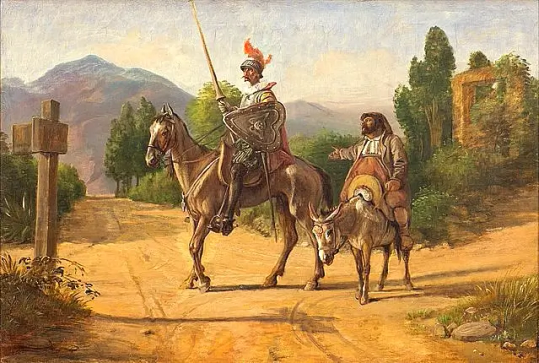
Exploring the World of Don Quixote
Prepare to embark on a captivating journey into the world of "Don Quixote," a literary masterpiece created by the brilliant Miguel de Cervantes. This classic novel is not just a story; it's an exploration of the extraordinary power of imagination, inviting readers to delve into a realm where the lines between reality and fantasy blur. In this adventure, we'll take a closer look at the enduring appeal of Don Quixote, a character who has left an indelible mark on literature and popular culture worldwide. You'll discover why this classic tale continues to captivate readers of all ages, making it a beloved treasure for both the young and the young at heart.
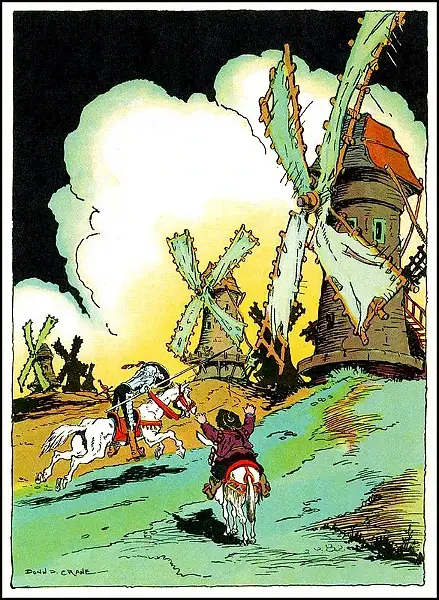
Donn P Crane Illustration from Don Quixote titled Windmills. Photo by Halloween HJB. Flickr.
Who is Don Quixote?
Don Quixote, brought to life by the genius of Miguel de Cervantes, first appeared in "The Ingenious Gentleman Don Quixote of La Mancha" in 1605. He is not just a character; he is an embodiment of noble ideals and an unwavering commitment to pursuing dreams, even when they seem improbable. But what makes Don Quixote truly unforgettable are his adventures. From tilting at windmills he mistakes for giants to freeing prisoners who are, in fact, convicts on their way to prison, his escapades are both humorous and thought-provoking. Joining him on these quests is the loyal Sancho Panza, a character whose witty humor often clashes with Don Quixote's idealism, creating a dynamic that keeps readers eagerly turning the pages.
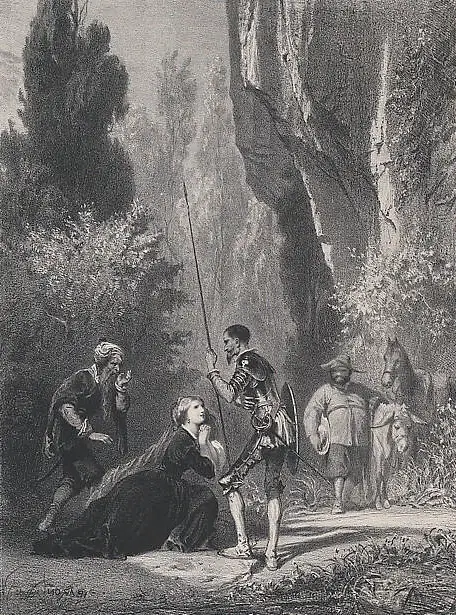
The Princess of Micomicona, from Don Quixote. Photo by Henri-Charles-Antoine Baron. Met Museum.
Themes and Symbolism: What Lies Beneath
One of the enduring charms of "Don Quixote" is its exploration of the power of the human imagination. Quixote's world is filled with giants, princesses, and chivalric adventures, showcasing the incredible capacity of the human mind to shape our reality. Yet, beneath the surface, the novel also raises thought-provoking questions about the nature of reality. It challenges us to consider what is real and how we determine the difference in a world where facts and fiction can often blur. The use of symbolism in "Don Quixote" is another facet that makes this classic an educational and thought-provoking read. Dulcinea, the maiden in distress, represents ideals, beauty, and honor, and yet, she is nothing more than a product of Quixote's vivid imagination.
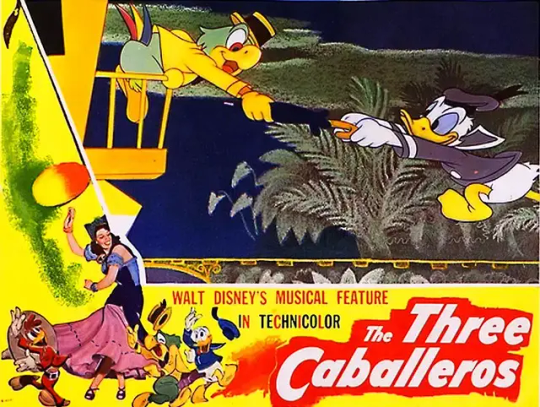
The Three Caballeros, Disney, 1945. Photo by Rossano. Flickr.
Don Quixote's Legacy: Impact on Literature and Popular Culture
"Don Quixote" has proven itself to be more than a mere novel; it's a cultural touchstone. Its impact on literature can be seen in the works of authors like Shakespeare and Mark Twain. Its influence stretches into popular culture, inspiring adaptations in film, television, and even music. From Orson Welles' masterpiece to Disney's "The Three Caballeros," Don Quixote's spirit of adventure and passion for life continues to leave an indelible mark.
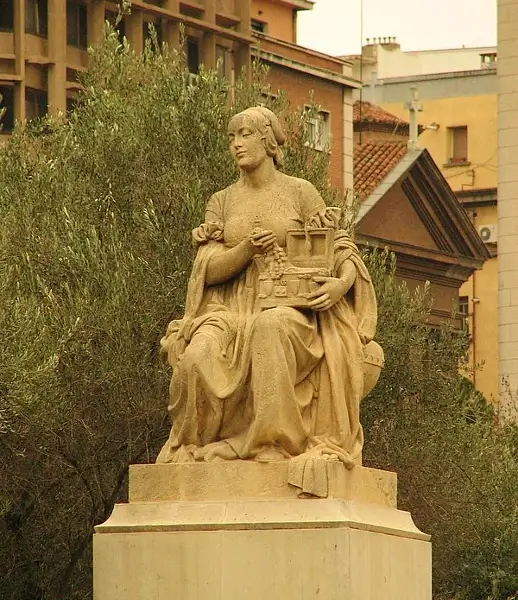
Dulcinea del Toboso. Photo by Tnarik Innael. Flickr.
Exploring the Characters
Sancho Panza Sancho Panza, the loyal squire, brings a balance of humor and practicality to the narrative. His witty presence often challenges the idealism of his master, providing an engaging counterpoint that keeps readers entertained. Dulcinea Dulcinea, the ethereal love interest, raises profound questions about the power of idealized imagery. She represents the intangible beauty and honor that Don Quixote tirelessly seeks, and yet, her existence remains solely within the realm of imagination. The Duke and Duchess These aristocratic characters, who manipulate Don Quixote's delusions, remind us of the dual nature of power and control, adding depth and intrigue to the story. The Priest and The Barber In contrast, The Priest and The Barber, characters who attempt to ground Don Quixote in reality, exemplify the age-old conflict between reason and imagination, prompting readers to contemplate the fine line between the two. The Innkeeper and The Prostitutes The Innkeeper and The Prostitutes serve as a striking reflection of the moral dilemmas that often challenge Don Quixote's noble principles. They confront the protagonist with the gritty reality of a world that doesn't always align with his chivalric ideals.
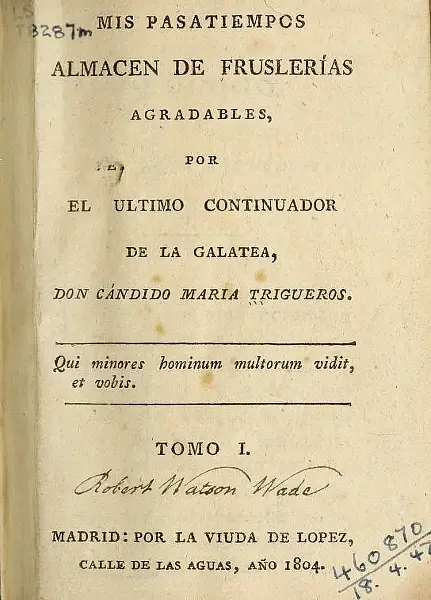
Mis pasatiempos, almacen de fruslerías agradables - por el ultimo continuador de la Galatea, Cándido Maria Trigueros. Biblioteca de Humanidades.
The Author Behind the Madness: Miguel de Cervantes
Miguel de Cervantes, the brilliant mind behind "Don Quixote," overcame adversities to become one of the most influential writers in the Spanish language. His life story is a testament to the power of resilience and determination. Cervantes' literary contributions extend far beyond "Don Quixote." His first novel, "La Galatea," is recognized as Spain's initial foray into the world of novels. Additionally, his collection of plays and other works further solidified his reputation as a literary icon.
Why Don Quixote Endures as a Classic
"Don Quixote" endures as a classic because it not only tells an entertaining tale but also imparts essential lessons. It encourages readers to embrace their dreams, even when the odds seem insurmountable, and emphasizes the significance of friendship and loyalty. So, if you haven't had the pleasure of experiencing this literary masterpiece, now is the time. "Don Quixote" offers an unforgettable adventure that transcends time and culture, making it a story that continues to captivate and inspire readers of all ages.
Conclusion
"Don Quixote: Timeless Tale and Impact" invites readers on a captivating journey through the imaginative realm of Miguel de Cervantes' literary masterpiece. This classic novel, with its classic character, has transcended time and culture to leave an indelible mark on literature and popular culture worldwide. The enduring appeal of Don Quixote lies in its exploration of the power of imagination, the blurred lines between reality and fantasy, and the symbolic depth within its narrative. Its themes of pursuing dreams and the importance of friendship and loyalty continue to resonate with readers, making it a cherished classic for both men and women aged 35-60. As we reflect on the legacy of Miguel de Cervantes, it becomes evident that his work extends far beyond Don Quixote. It demonstrates his profound influence on the Spanish language and world literature. Moreover, the enduring power of storytelling to captivate and inspire is a testament to the timelessness of this literary treasure. So, whether you're revisiting this classic or diving into it for the first time, the world of Don Quixote promises an enriching experience that will forever remain etched in the annals of literature. Sources: THX News & Wikipedia. Read the full article
#CharactersinDonQuixote#Classicnovel#DonQuixote#Imaginativeworld#Impactonpopularculture#MigueldeCervantes#MigueldeCervantes'life#Powerofimagination#Symbolisminliterature#ThetimelessDonQuixote
1 note
·
View note